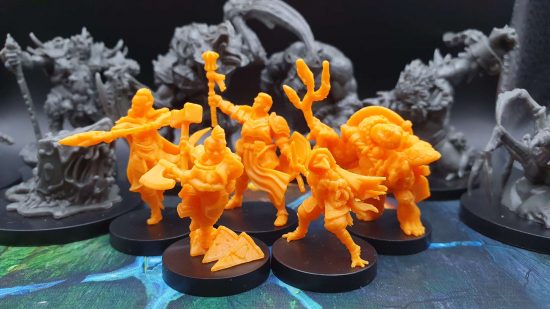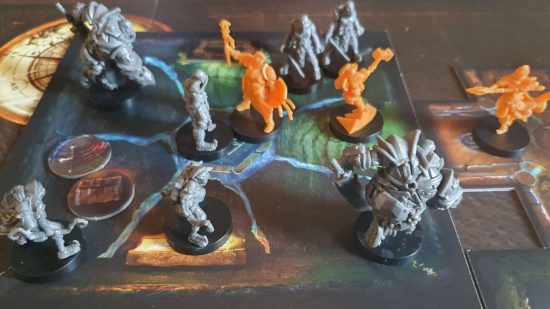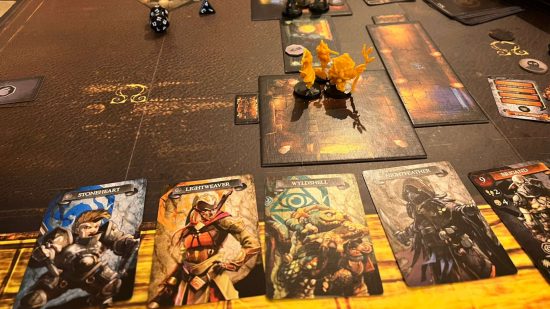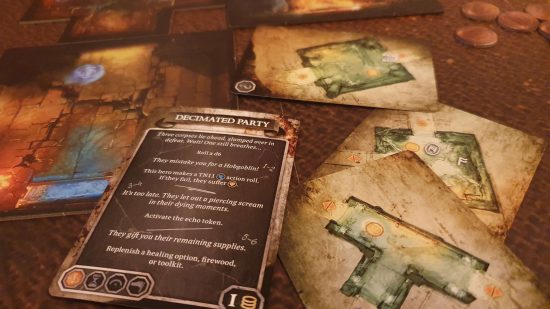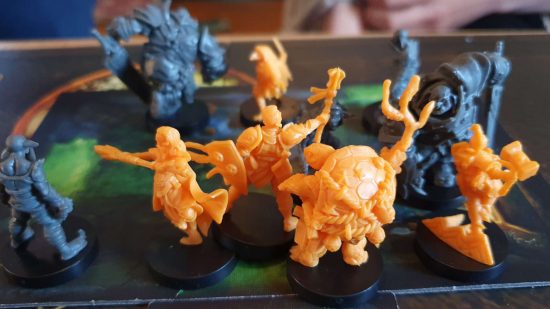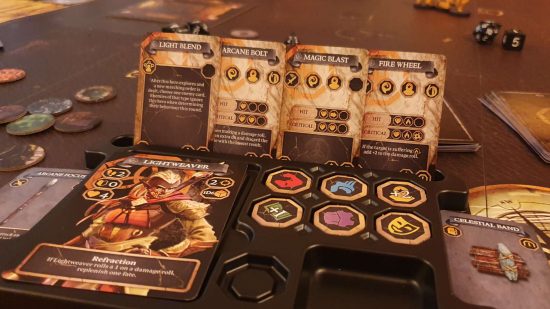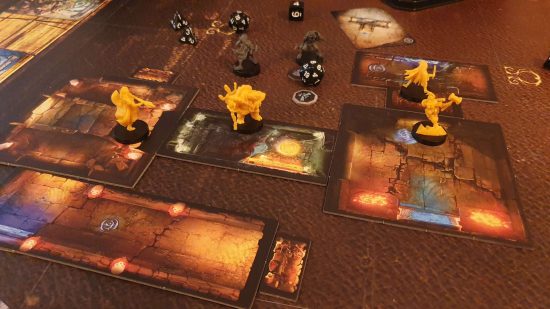Our Verdict
Bardsung has everything a good dungeon crawler needs, plus oodles of gorgeous miniatures. Combat and enemy encounters evolve throughout the long campaign, though strategy gamers won't find a deep challenge here. Information could be presented better, but this is a good choice for families, older children, and game groups who fancy a regular low intensity dungeon dive.
Bardsung: Legend of the Ancient Forge is the very archetype of a dungeon crawler board game. Stuffed into its coffin-sized box you’ll find dungeon tiles, piles of tokens, heroic adventurers, a replayable campaign with a branching narrative, and dozens upon dozens of miniature monsters. This Bardsung review is based on playing through two of the game’s chapters over about sixteen hours, with a review copy provided by publisher Steamforged Games.
First – and my apologies to Steamforged Games for opening like this – let’s address the dragon in the room. Bardsung does not shift Gloomhaven or Frosthaven from the podium position as the best dungeon crawler board games on the market.
Don’t take that as a dismissal of Bardsung; both ‘haven titles have a place in our guide to the best board games full stop, and you can read our Frosthaven review to understand why. There’s plenty of headroom for great games that aren’t as good as Frosthaven – and for the right players, Bardsung may well be the better choice.
One area where Bardsung kicks the ‘haven games into the sun is its production values. Bardsung is utterly stuffed with fantastic, pre-assembled plastic miniatures. These are gorgeous and characterful. Steamforged Game’s in-house sculpting style is a little more exaggerated than DnD, a little less cartoony than World of Warcraft. I’m especially fond of Nightfeather, the rogue birdman player character, and the gnarly myconid sorcerer.
Those minis come with their own vacuum formed storage trays, which also hold all of the hundreds of cards and dozens of tokens that go with the game. Though there isn’t a designated space for dungeon room tiles, packing the contents of the game back into the box is as satisfying as completing a row in Tetris.
You pay for all of that plastic. Bardsung’s MSRP is an eye-watering $199.99 (£199.99), though deals may well be available at your local game store – it’s currently half that price on Amazon.com. If you want to start a DnD miniature collection this is a good value proposition, though it’s in contention with a shopping spree of Wizkids or Reaper Bones miniatures, or even a 3D printer. But is there enough game there to justify all that plastic? Well, yes. Kind of. I’ll explain.
Bardsung comes with a single, branching campaign, broken down into a series of chapters, themselves broken down into a series of connected encounters. An encounter could be one of a few types, like a basic treasure-hunting dungeon delve, or a wave survival mode, or a scripted encounter against a boss. During most encounters players explore the dungeon, revealing cards that open up new corridors and passages, enemies, and other challenges.
The dungeons you delve are randomly generated, and your objectives in each encounter are fairly repetitious: you usually need to find a route out of the dungeon, you probably want to reach some of the treasure token to get the loot in them, perhaps you need to find a hidden exit instead of the usual way out. It’s a bit like grinding for dailies in a live service game.
But just as that starts to feel repetitive, the chapter ends, and things change. Each new chapter has a new list of enemies, new wandering monsters, and tinkers with the cards in the room, corridor, combat, and challenge decks. Choices you make during certain encounters, or when picking which encounters to participate in, may affect those decks as well.
That in turn may change which chapter you end up in. The game gradually evolves, and though the objectives of your encounters stay fairly consistent, the content within them changes up just enough to stay engaging.
It’s a lightweight campaign system that keeps injecting novelty into the game, and doesn’t require too much tracking once you’ve got your head around it. This information isn’t always communicated clearly, and might be split up between flavor text, narrative cards, numbered passages in a “choose your own adventure” style adventure book, or simply implicit in the way you’re able to move between encounters within a chapter. It works, but it could have been better.
Combat and exploration are straightforward. Player characters – and monsters, once they’re discovered – activate in a randomly determined initiative order, getting two actions on their turn. Whether attacking or defending players roll all dice, and combat is fairly decisive; you roll a D20 to hit, roll another die to see if you can convert that hit into a critical based on the target’s toughness, and then apply the effects listed on the attack card.
Most monsters can take two hits, but big brutes flip their initiative card to reveal different stats the first time they would die, and bosses have multiple initiative cards that must all be defeated before they finally fold.
Completing encounters and finding treasure grants experience points you can use to buy new skills or upgrade existing ones, and increase your stats. The game also introduces more challenging enemies with more nuanced behaviours with each passing chapter, or sometimes in the middle of it. Though you’re always hacking and slashing, it’s never the same kind of hack and slash for long.
It’s a tactical challenge, but not the deepest. I’ve mostly played Bardsung with a board gaming friend and her sons, aged eleven and thirteen. I won’t downplay how smart these kids are – they both play Middle Earth Strategy Battle Game, that’s hardcore nerd stuff – and Bardsung has enough challenge in it keep them excited for four hour sessions. Objectively I can point to the limitations of Bardsung’s combat system, but subjectively they had a great time, and I did too. Who am I to argue with the wisdom of nerdy kids? I was exactly like them when I started in this hobby.
Though the rules are fundamentally straightforward, there are some frustrations in learning and referencing them. The rulebook does double-duty as the ‘learn to play’ manual, and it’s not great as a reference aid. This never caused a big problem when I played, but it could be better. I’ll also mention here that Bardsung contains some misprints, which you will need to check on the Steamforged Games website – I’ve encountered one so far, not game-breaking.
Bardsung is a middle-ground between the kid-friendly Heroquest and the grown-up Frosthaven or a fully fledged tabletop RPG. Adults who want to crawl dungeons without too much stress, older children, and mixed aged groups will be well rewarded, though strategy buffs should probably look elsewhere. Given the cost, be sure that you want this package before you commit to it – if this review leaves you with questions, you could do worse than this Let’s Play video by The Dice Tower:

Objectively this game gets a seven out of ten – more to do with a lack of polish and its high cost than any concerns around the strength of the gameplay. But subjectively I’m giving it my highest possible award – I’m going to keep playing it even though I’ve finished writing the review.
